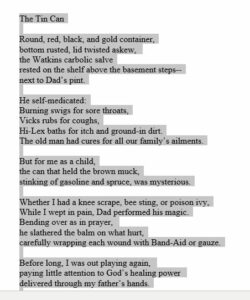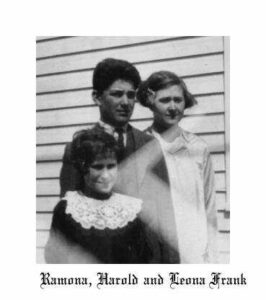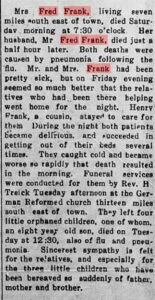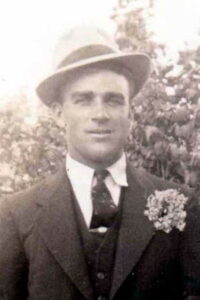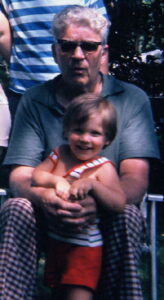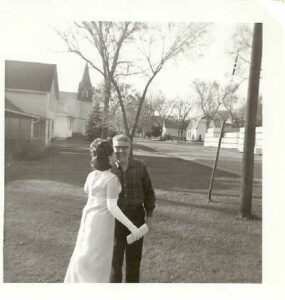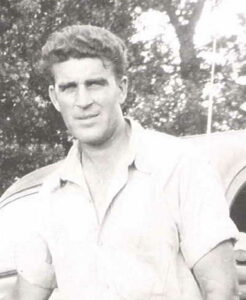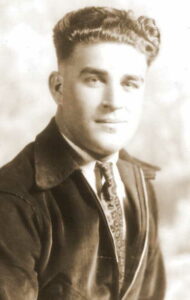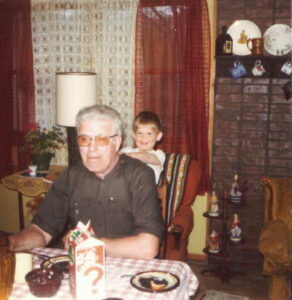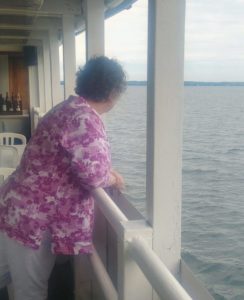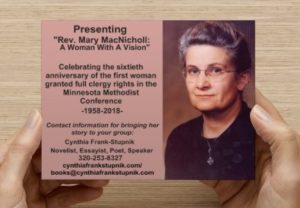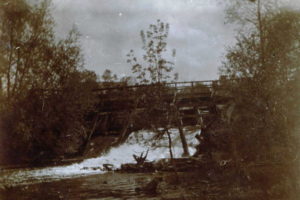
Clearwater
“Where Two Rivers Meet”: Book Launch

I am pleased to invite you to the launch of “Where Two Rivers Meet” on Sunday afternoon, January 14th, at 1 p.m. We will meet at the United Methodist Church in Clearwater, Minnesota. Come join us for a little music, and a little talk about Clearwater history, Minnesota Main Street Women, especially, the protagonist of the new novel, the first woman of Clearwater, Abigail Camp Porter. We will share some prizes, a chance to see all my books, and of course, an opportunity to share a piece of cake.
Writing 101: Bringing Light on Writer’s Block
If writing is going to happen, it might begin after my first cup of coffee. I achieve this by pouring dark House beans into the grinder and roaring this until I get a fine powder, dumping it into a paper-lined funnel, pouring in cold water, and flipping on the switch. While I wait for this to brew, I pour water into my Keurig for two cups–to share with my husband. I toss in a House K -cup and press “ON.” The two pots come together and finish together. I take my cup of Keurig and fill it up from the regular pot. Then I slide into my Lazy-Boy, switch on my cup heater, and set the cup of alertness down. I turn on the laptop, wait for warmup, and take my first sip. I know it will take more than this to get all of my lights to start blinking.
I’m usually running empty when I wake. Very few logical thoughts–only intuitive-actions can get me this far in the morning. Family knows not to talk too loudly or, if possible, not at all, “Let me have my first cup of coffee,” before I’m expected to make some decision or sign some legal document. If I were to exaggerate this, I’d be funny. I’m speaking the truth. It will take that first cup of caffeine to trigger the neurons in my gray matter before I get the eye-opening, thought-focusing jolt to begin my day and clog up that great big cavity of nothingness. On a good day, I might start typing, officially brainstorming about and writing on my next project, which is now my latest novel, the third in a series, Where Two Rivers Meet.
But sometimes, I need more than java. I need physical inspiration–whether I am trying to fill in a plot segment, follow the yearning of a poem, or conceptualize a blog, without which I am just a blinking cursor. I feel like the chocolate Easter eggs or bunnies, hollow inside. So on one of my good days, I joined my sister on a trip to the Mississippi River, to wander on the path my protagonist, Abigail, would have walked when she disembarked the steamboat Governor Ramsey below the bluffs at Clearwater.
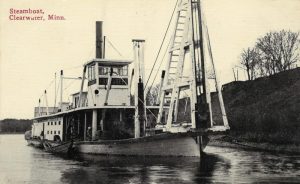
The date was August something, 1855. She would become the first white woman to come to the village, and she would work as the townsite’s hotel housekeeper. Brave she must have been to come alone from Vermont, via, stagecoach, train, and steamboat to an area wild with male ambition. Her brother-in-law, Dr. Jared Wheelock, the first doctor in Wright County, Minnesota, would be there to keep her company and in the area to keep an eye on her. Her cousin’s husband would be building a bigger and better hotel eventually, but it would be a couple of months before Jared’s wife, Abigail’s sister, would join her in the town. Yet, all this I know and have written about already. While I love the free feeling of nature down here–birds singing and light breezes moving the trees and the river’s current, I need something worthy of writing.
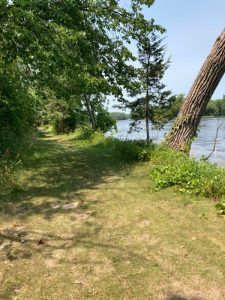
As I turned around, a tree with two huge cavities lured me to come closer–to gaze into its hollowness, touch its rough bark, feel its smooth green leaves, and look UP. Thick branches, wide and round spread their leaves above and over our path, joining other branches and other greenness, forming canopies of sorts. However, the tree alongside this enchanted forest-like walkway beckoned me into imagining life before I arrived on the scene, before Abigail arrived, and before white male settlers staked their claim to this part of the Mississippi River. So beguiled about this tree, I searched the Internet for answers. “A tree hollow or tree hole is a semi-enclosed cavity which has naturally formed in the trunk or branch of a tree. They are found mainly in old trees, whether living or not. Hollows form in many species of trees, and are a prominent feature of natural forests and woodlands, and act as a resource or habitat for a number of vertebrate and invertebrate animals.[1]”
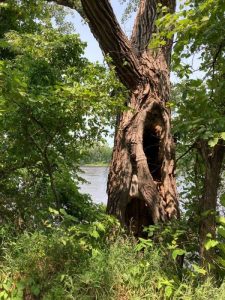
Read on in Wikipedia to learn that “it may take 220 years for hollows suitable for larger species to form.” So how long has this tree been standing? Would Abigail have seen it in its youthful stage? Had it already developed a small hole? The article provided more. I learned that this hole is never truly empty. Yes, all sorts of creatures may live or burrow inside.
All writers have the block one way or another. Mark Twain, John Steinbeck, Ernest Hemingway, and others. They give great advice on 13 Famous Writers on Overcoming Writer’s Block. For now, I believe in myself again. I am inspired and feel my synapses firing again.
Memorial Day, 2022

Friday, my sister and I made our rounds in the St. Cloud and Sauk Rapids areas to honor and remember our relatives and friends. Although I never knew the Atwoods nor Nancy Wilson Atwood Allen, they, or at least Nancy, are characters in my next novel, “Where Two Rivers Meet.” We believe Nancy needs recognition. She came to Minnesota around 1858, settling in St. Cloud, right across from the famous newspaper editor, Jane Swisshelm, her house, and the St. Cloud Visiter and St. Cloud Democrat office. They became fast friends, and Nancy’s oldest and Jane’s daughter married. Nancy was an “artistic” ambrotypist, which included taking tintypes. Her story is truly amazing, but she died young in St. Cloud and is buried in North Star. More to come when my novel is published, which will be third in the series of strong Clearwater, Minnesota, Main Street women.
Glorious day
Rebecca Frank is with Cindy Stupnik. (From FACEBOOK)

Thank you, Buffalo, for such a great opportunity to visit with interested and interesting non-fiction and fiction readers. I had a glorious time (although it spitted rain, I had to hold on to my umbrella pole because of the wind, it was chilly, it was warm, and I got stung by a bee).
Why am I frowning? Not because of my future audience, but the hour. I woke at 5:15. By the time, Becky drove me to Buffalo and helped me set up, it was 8 in the morning– me–who doesn’t crawl out of bed before 8:30-9!!
To this crowd and all others: I am sorry if I sometimes get too animated when I am talking about the history of my former community, Clearwater, Minnesota. It is the teacher in me (taught English for 25 years, was raised with HISTORY/HERSTORY–from both parents. Dad had great pride in his home state of South Dakota, specifically, north of Yankton and German-Russian. Mother had an interest in all things Minnesota, her deep American roots as well as her European roots.)
My writing has been inspired by what my parents inspired in me. One of my favorite subjects is women and their everlasting plight to be heard, believed in, and respected. The struggle the average woman has had to face throughout her lifetime needs continual documentation because men didn’t do everything.
In all my research, I have found my small community, Clearwater, Minnesota, to be a microcosm of all that was good and awful in the world for women at any given time. Some are natural-born leaders and respected by all. Jennie Phillips, my protagonist in Scruples and Drams, was a leader in her community. From her views on the patent medicine products she sold in her store, to some of the other over-the-counter health products, how she feels about a high school joining the elementary and upper grades to the existing school building, etc, villagers, both men and women, newspaper reporters, asked her advice on important matters of the day.
The oldest girl in the family, smart, teacher-turned pharmacist, business co-and then full-owner of Phillips’ Drug Store, Jennie may have been successful and respected, but she faced disappointments as well. One was that her brother’s name legally had to be included on the Phillips; Drug Store sign in 1910 because she was a woman and wasn’t smart or trustworthy enough to handle business matters. Only men held those honors or responsibilities. It wasn’t Jennie’s first disappointment as a woman trying to pursue a career in a man’s world, though….
See what I mean? I get so excited and tangled up in my subject, I forget to shut up. I will stop and let you read my books. My next event is in Rice, Minnesota. Sept. 11-12. Saturday 8 a.m. to 6. pm and Sunday 9-4.
Cindy
It’s good to be back
![Zoom in on Front Standard. Yankee Doodle Dandy [Blu-ray] [1942].](https://pisces.bbystatic.com/image2/BestBuy_US/images/products/2587/25879531_sa.jpg)
We had our first celebration party Saturday night. No masks, no social distancing. Lots of good b-b-q’d food–burgers, brats, ribs. Add all the other picnic food, and we stuffed ourselves. Later, our house was surrounded by individual fireworks. One time, I wondered if flames licked our roof. All turned out fine.
Yesterday, we had a later start to our 2nd celebration and had to travel for it. I started watching Yankee Doodle Dandy in the morning, and again for the nearly twentieth time wasn’t disappointed. The black and white screen didn’t disappoint either because the music and acting related brought color of its own type and emphasized family, patriotism, a united country. All of which we can be proud. Like other generations who bounced back after our county’s crises, we are bouncing back from Covid–I hope for a long time now. On our way home, the sky was lit up with all sorts of colored lights–north, east, west anyway–we saw colorful expressions of “Let freedom ring,” celebrating our county’s freedom.
It seems like most of the nation is hot and dry or enduring storms of one type or another. We have lots to be sad and worry about, lots to be thankful for–and we are free, to a certain extent, to say what we want, do what we want, and explore, which is what I’ve been doing again for my upcoming book–Where Two Rivers Meet.
It all started with the comment my sister made about giants rumored to have been found back in the 1800s. “Giants,” I asked. She plagued about my memory again because I had never heard the tales….”Out near Clearwater Lake,” she said, trying to ‘shiver me timber’ memories. So I did an Internet search. Little else is known, and not much media was given any coverage, BUT:
“In the “Pioneer Press” of June 29, 1888, is an account of the discovery, twelve miles from Clearwater, N. E. 1/4, sec. 21, T. 121-27, by Charles W. Pinkerton, of the town of Corinna, of the remains of seven persons said to have been from seven to eight feet high.” Franklyn Curtiss-Wedge, History of Wright County, Minnesota, 1888.
We both started researching and took a few trips out to dig up graves where we knew they were supposed to be found–south of Clearwater. Our freedoms didn’t allow us to go on private properties. Following what we thought were the right coordinates, we drove on paved and dry roads with dust spraying the back of my SUV. Because so much has been developed, the area, Clearwater Lake, gave up no hints as to where we should look. When we got home the last time, we re-checked the coordinates and realized we were off a couple of sections.
I have to be honest, I’ve been known to travel on trails that aren’t posted private property (to my sister’s embarrassment and fear). But without a little brave/stupid hankering for answers, I would not have been able to write my first book, Steppes to Neu-Odessa, which is a biographical dictionary of Odessa Township, Yankton County, SD, and where the first German-Russians settled in the US–including mine). I don’t worry too much about not having an invitation, but I definitely won’t go where there is a warning, and I am not wanted. But if anyone gets a hankering or an invitation, let us know. We might follow along. I might also want to see the many, MANY, native mounds that surround a number of the lakes in this vicinity and the Clearwater River. Otherwise, I have the freedom to imagine what I want for the next book.
Hope you are still enjoying your Independence Day weekend on this Federal holiday. HOT! yes, but so much to do and find and explore.
ANYONE FOLLOWING ME?
On the road again,
Cindy
so many Reasons for the Season
A few of my followers grew up in my home village, Clearwater, Minnesota. You knew where the Kniss’s Grocery sat–on Main Street, downtown Clearwater. Ellis Kniss carried everything that any grocer carried in the larger towns. While it didn’t sell clothes that I can remember, the window shelves carried candy jars galore. From lemon drops to root beer barrels, a kid could satisfy that sweet tooth for a penny. Its main source of income was the sale of all sorts of meats, shelves of Fairway canned vegetables and fruits, juices, frozen goods, lots of fresh produce, and plenty of ice cream novelties–sherbet push-ups, Eskimo bars, Cheerios, fudge cycles, ice cream bars and so much more for a dime or less. But a few weeks before Christmas, Ellis also stocked evergreens for the holidays.
The Foundlings
My father’s search to find our tree
would often take him out to see
if he could find at Kniss’s Store
a Christmas tree like years before.
Up against the mart’s north wall
stood evergreens so lush and tall.
But on the ground, my dad detected
a scrub-discarded and neglected.
A tree to touch his tender heart—
for orphaned man, his counterpart.
He dragged it home where we awaited
a tree to love—when decorated.
As it stood in stand, we realized
the tree was less than he’d surmised.
The bells and balls, a garland rope
just didn’t help. We gave up hope.
Out of ornaments, so what to do?
We finally admitted we were through.
Tinseled and lit, a star on top
that dried up tree was still a flop.
Now years later . . . in memory,
I think that I shall never see
a poem as ugly as that tree—
or one that means so much to me.
Christmas is magical. Even during Covid-19 times, we have renewed hope in dire circumstances. We love the lights and the sparkle in little children’s eyes as they wait for Santa. I remember well my inkling that he might not be real., but I didn’t want to ruin it for my little sister. The setting again is at the Abeln farm on Warner Lake, Lynden Township, Stearns County, Minnesota–just a few miles from Clearwater.
Navy-blue, crystally winter’s night.
Glittering sifted snow, icing topped lake,
evergreens muffed in white. I plodded
as Becky pulled me down the glossy road.
A bundle of blue, she sometimes followed,
sometimes led, sometimes jumped over my feet
as she chattered about baby dolls, Santa’s snack—
star-shaped cookies, his tummy and our chimney.
Late autumn’s whispered secret unmasked the man.
a grown up woman of ten, I played my part
for my younger sister that Christmas Eve,
although I no longer believed.
Carolers sang, “. . .won’t you guide my sleigh tonight?”
I grumbled, “It’s time to go home.”
As I turned, my eye caught a wink of light
dashing across the blue-black sky.
Becky and I tumbled through pockets of snow.
The yard glowed—lit house and trees.
I blinked.
Who’s that hunching in the shadows?
Mom, traditionally dressed in pink flannel gown,
pulled off our coats and pushed us into the living room.
Becky ran to a diapered doll and teddy bear.
I gazed at a white-veiled Barbie,
Betty Crocker Bake set, white fur-topped boots.
On the floor lay the empty green 7UP bottle
and a plate of cookie crumbs.
I ran to the window. Cupped my hands around my eyes.
No reindeer, no sleigh.
But on that navy-blue, crystally winter’s night,
I decided to believe another year.
@ Cynthia Frank-Stupnik
My prayers, like all of yours, are for better and healthier year to come, for more sunlight than darkness, for more blessings than pain.
Merry Christmas and HOPES for a Happy New Year.
Dad
He was not a strong female character that I write about fin my Minnesota Main Street Women series from Clearwater, Minnesota, but he held a few positions like in the village like mayor, church councilman, volunteer fireman, and good, steady father. Harold Frank would be 108 today. One hundred years ago, Feb. 20, 1920, he also became an orphan, along with his 2 sisters. Despite his loss, he was a quiet but strong role model for me and my two siblings. He also provided me with plenty of story and poetry material. His strength and fortitude gave his two daughters and son quite a path to follow.
In hot pursuit
1 if by land, 2 if by sea…. Cindy Stupnik
is @ it again. Looking for clues on Lake Minnetonka…
Is she trying to find the footsteps of Simon Stevens,
founder of Clearwater and also the first white man
to lay eyes on Lake Minnetonka?
Is she looking for his mill site on Gray’s Bay
@ the headwaters of Minnehaha Creek?
Or more likely has she spotted the alcoholic beverages @ the bar…?
More adventures in the making.
Becky Frank
LAKE MINNETONKA
This huge body of water, circling the shores of many lovely towns like Excelsior, Deephaven, Wayzata, and Shorewood has intrigued me ever since I learned about Simon Stevens, Clearwater founder and brother John Harrington Stevens, Minneapolis founder. Both men were born and raised in Brompton Falls, Quebec, Canada. John Harrington, the older of the two, became colonel in the U.S. Army after fighting in the Mexican-American War. Simon followed his brother once he settled in Minnesota and helped build his house, the first house on the west side of the Mississippi across from St. Anthony.
Simon Stevens made his own history. Well-known around Minnesota during his life span, he and a group of fortune-seeking explorers paddled westward from the Mississippi River on the Minnehaha Creek approximately twenty-two miles. The group portaged around a huge falls, but once they got to the headwaters of the creek, they viewed a huge body of water that would become known as Lake Minnetonka one day. At what would be called Gray’s Bay, they built a sawmill. Simon did not stay around long but sold his rights to search for his own land to call home. This would become Clearwater, at the mouth of the Clearwater River that flows into the Mississippi, and the setting for many and most of my works.
A couple of years ago, for a birthday trip, I asked my husband to take me to Lake Minnetonka to find the area where Simon Stevens and others built the mill. This site has a wonderful hiking path, small dam, and offers lots of historic information, evening mentioning Simon Stevens.
So as I work on my next book and wanting to see if we could find any type of imprint of Simon’s, my sister Becky and I signed up for a cruise on Lake Minnetonka. We had beautiful weather, albeit a bit cool, and viewed many luxurious homes, boats and their houses. We heard about some of the lake’s history, especially the Big Island where amusement called out to adventure seekers during the early 1900’s from nearly all over the world. Jennie Phillips, protagonist in Scruples & Drams visits relatives and friends in Excelsior, and even Jennie Phillips’s sister Ruthie’s autobiography refers to the the ride around Lake Minnetonka and Big Island Amusement Park:
The summer after my father passed away [1904] Pat [Ruthie’s older sister Harriet] and I were invited to go to mother’s sister [Harriet Ada Crossman] and family who lived at that time in Excelsior on Lake Minnetonka. We had never been to a large city before so we were quite excited as we had to go to Minneapolis and then change trains to go out to Excelsior. . . I loved the trip over and we stood at the rail of the boat and watched the rainbow in the drops of water as they flew off the paddles of the large water wheel at the side . . . So many beautiful homes and some places just woods.
We knew already that the park was no longer in existence. Yet, when the captain of our Lady of the Lake cruise ship drew close to the shore of Big Island and mentioned it was now a nature park, I was dismayed; I so wanted to see something of the past.
In past research for Pins & Needles, I learned protagonist Maude Porter’s aunt, uncle, and cousins settled near the lake in Excelsior as well. Annette Robinson married Mark L. Knowlton. Knowlton was the Clear Lake, MN, postmaster at the time. The family eventually moved to Minneapolis and finally to Excelsior where he worked for the Pillsbury Company:
In the early 1900’s, [the Mark Knowlton] family was living in Edgewood at Lake Minnetonka and he would ride his motorbike from the Lake into Excelsior. (Anyone owning a motorized vehicle in those days was noticed) where he’d park during the day, and catch the train or streetcar into Minneapolis. The process was reversed in the evening. In later years the family remembered the good bread that “Grandpa” brought home from the testing kitchens at Pillsbury.
On another trip a couple years ago, my sister and I toured more of Excelsior, trying to find where the Knowltons once lived. We found one house. At one point in 1921, Mark Knowlton and his son purchased the James H. Clark’s home that was built to become a boarding house [and now is a bed and breakfast–the Bird House Inn] from the children of Clark and his wife. After Mark died, his son “J. E. “Jack” Knowlton who ran a horse and wagon delivery service around the lake via launch, and was also the proprietor of Knowlton’s Cabin Camp adjacent to the south, at 411 Water Street, from 1932-1948 [took it over.] His wife, Mrs. J. E. Knowlton, always had roomers in the big house. She was born Alice Howard, granddaughter of homesteader Silas Howard, for which Howard’s Point on Lake Minnetonka is named.”
Unfortunately, we saw nothing like horse and wagon, an old-fashioned motor bike, or even a mirage of a saw mill. Our cruise did not even take us to Gray’s Bay because to get there from where we boarded in Excelsior would take a five – six hour cruise. Since there is little to no public history tour of the lake, we had to admit that we had researched the people and had seen many of the sites that were to be used in my next book. (Please, if you know something we don’t know, let me know.
Yes, I am in a “hot pursuit” of characters, plots, and history again to bring alive another Minnesota Main Street woman for my next novel. But I already have the makings of a couple HOT romances, some wiley twists and turns, a few not so nice individuals–with a juicy murder or two–and lots of historic tension.
Cindy
[wysija_form id=”2″]
On the road again

ON THE ROAD . . .
–TO RECOVERY–For those who didn’t know–
I finally had a knee replacement on May 3. Many of you saw me hobbling around. I’d have good days and bad days, but this winter was the worst. Not only had I needed this surgery for quite a while, but the knee had caused my ankle to degenerate from the reconstruction I had in 2005. This caused my podiatrist to have a brace designed and cast for me to wear to protect my ankle from further issues. My doctors, family, and I took special precautions in order to commit to my recovery–blood thinners due to a previous pulmonary embolism, intensive, in-house rehab physical therapy for 2 weeks 3 times a day, and when I was released to go home, lots of care and more physical therapy 3 times a week with my favorite PT. After 8 weeks of physical therapy, I’m doing great, and better yet, NO BOOT to protect the ankle.
–With REV. MARY MACNICHOLL-–
I am putting the final touches on the powerpoint slide presentation for the first woman to be fully ordained in the Minnesota Methodist Conference in 1958. Most of you know that I earned a grant from the United Methodist General Commission on Archives and History to write her story. Little did I know that this woman, Mary MacNicholl, who would be my minister in Clearwater, Minnesota, in the 1960s, had broken through her own ‘glass ceiling’. How did I know back then our church community would be served by such a celebrity? Not sure I or anyone else knew Mary Mac’s impact, but I know I felt honored to be noticed by her when I sang in the choir, attended Methodist Youth Fellowship, enrolled in our short confirmation class (Methodist youth usually have only a six-week education), she came to my graduation party, and when she often stopped to have coffee with my mom. She awoke our consciences, our awareness of the world around us, and our knowledge of our Methodist tradition. Sixty years after her ordination and forty years after her death, I hope to do justice to Mary MacNicholl’s story and service. The essay is ready to be sent to the United Methodist General Commission on Archives and History. The new and improved powerpoint will be tested when I speak at Wykoff United Methodist Church. This was one of the three churches Pastor Mary MacNicholl was charged with after she graduated from Drew Seminary in 1949. I will be presenting her story on July 21 during the church service at 8:30, a.m.
–BRINGING THE STORIES OF STRONG MINNESOTA MAIN STREET WOMEN TO MY READERS–
I was busy up to surgery–actually, less than a week before I sold my books at the St. Cloud River’s Edge Convention Center. Then the hiatus. Now, I am excited and ready to begin my busy time of the year–July through November.
After I present Mary MacNicholl’s story in Wykoff, I’ll be bringing my books, Minnesota Main Street Women series–Scruples & Drams and Pins & Needles, Around Clearwater, and Postcards from the Old Man to sell at the Clearwater Heritage Days at the Rendezvous at the dam, off Highway 75 and the north end of Main Street, Saturday and Sunday, August 3-4.
Come see me at the Clearwater dam where I’ll be participating in the Rendezvous. Here where the Clearwater River merges with the Mississippi, the village was first created. In the 1850s, sawmills lined the banks and built the first houses and store buildings. Feed mills, sawmills, stores of all kinds– hardware, general merchandise, jewelry, clothing, shoe, and furniture sat on the banks of the Clearwater or up on Oak Street and Main Streets. These buildings and the people who occupy them are the subjects of my Around Clearwater history and Minnesota Main Street Women series. Each protagonist, Jennie Phillips in Scruples & Drams and Maude Porter in Pins & Needles, a real woman pioneer from Clearwater, made her mark on the community. They both see gender inequalities in the world as far as suffrage, health, education, and legal issues. Their desire to make things right for the women and their families they encounter is a major theme in my series.
If you want to know history, Arcadia Publishing’s Image of America: Around Clearwater is the most up-to-date word on early Clearwater.” Burrowed below bluffs overlooking the Mississippi and Clearwater Rivers, Clearwater’s houses, its churches, and most of its original businesses resemble those that settlers had left behind in the East. With its arch-like trees sheltering Oak and Main Streets, the community remained home to many who lived and died there and those who had moved on only to return for yearly Old Settlers gatherings. This sense of community allowed Clearwater to thrive. Flour and pulp mills lined the shores of the Clearwater River. Mercantile, hardware, jewelry, and drug stores cropped up, providing the products for a growing community. Trade once powered by steamboats on the Mississippi was taken over by James Hills Great Northern Railroad. While the village and surroundings have changed over time, the original charm is still there, ready to be explored again.”
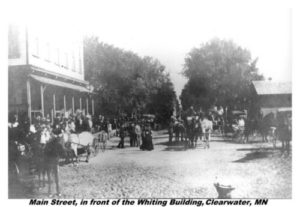
–WITH SOME FINAL THOUGHTS–
Speaking of Clearwater, Minnesota’s heritage that I have been writing about for a number of years, Clearwater’s Heritage Days is coming up August 2-3, with the Rendezvous lasting through Sunday. Along with coronation activities going on before the celebration begins, the parade comes back to downtown Clearwater on Friday night at 7:00 beginning at the Clearwater Dam. What a great move back to come back where the village began by the Clearwater and Mississippi Rivers. The parade route will begin there and end up at Eagle Trace Golf Course.
This length of Main Street will take you by many of the historic sites– past the Boutwell Hardware and Pat Quinn’s Saloon (neither are standing–that I write about in Maude Porter’s story, Pins & Needles. It will take you past the historic United Methodist Church I attended when I was in my youth, and down to the drug store (now an apartment building) I write about in Jennie Phillips’s, the woman druggist) story, Scruples & Drams. Three blocks further you will come to the Thomas Porter home and farm that he built beginning in the 1870s. He was a fur trader, farmer, village treasure and besides serving Wright County, and served in the Minnesota Legislature for a few terms. Your final stop will be at Eagle Trace Golf Club, which was his original land that extends down to the Mississippi River. I had trouble with the golf club’s webpage but this gives you at least the location: 1100 Main St. https://www.yelp.com/biz/eagle-trace-golf-and-event-center-clearwater
Come join us for some fun. I’ll keep up better from now on and let you in on the different spots I’ll be located over the next few months.
Cindy
P.S. Please “Subscribe” on my homepage.
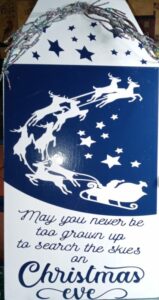 Sign by Becky Frank
Sign by Becky Frank